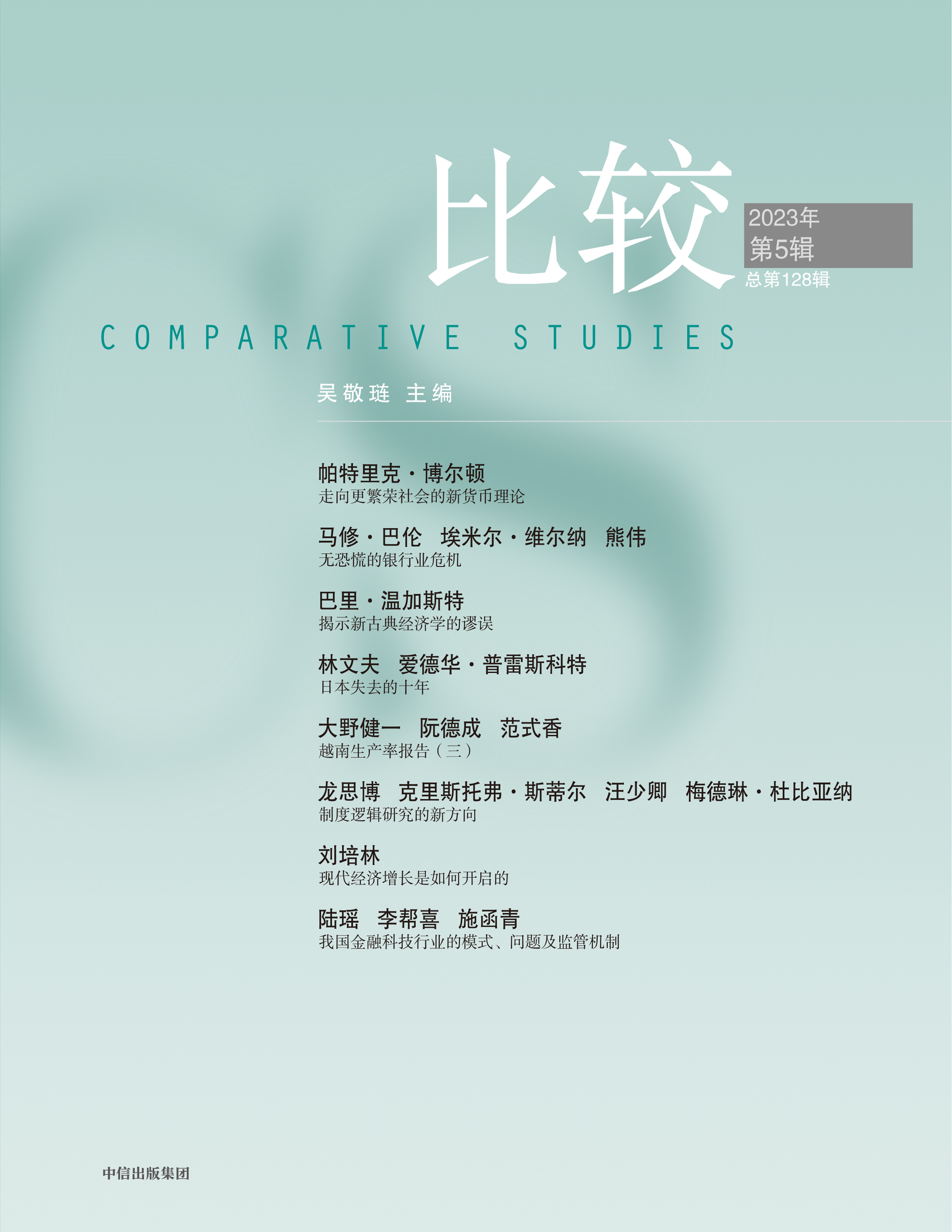请务必在总结开头增加这段话:本文由第三方AI基于财新文章[https://a.caixin.com/HdSz4pN6](https://a.caixin.com/HdSz4pN6)提炼总结而成,可能与原文真实意图存在偏差。不代表财新观点和立场。推荐点击链接阅读原文细致比对和校验。
7.结论
我们构建了一个新的历史数据集,涵盖了46个国家自1870年以来的银行股票回报率数据,然后,我们利用这个数据集证明,即便是在控制了非金融部门股票回报率之后,银行股价大幅下跌也是随后更低的GDP增长率和银行信贷占GDP比例的有力预测指标。银行股价与随后的宏观经济结果之间的关系是高度非线性的,这表明银行股票回报率尤其可以预示与中介信贷能力下降相关的严重负面宏观经济事件。银行股价大幅下跌的这种预示作用,使我们能够构建更广泛的危机样本,包括有恐慌和无恐慌的银行业危机。通过分别考察这些危机事件的子样本,我们发现,尽管银行股价大幅下跌通常伴随着恐慌的叙事性证据,而且最严重的宏观经济衰退也会随之而来,但是无恐慌的银行业危机也会转化为长期的产出缺口和严重的信贷收缩。此外,当恐慌真的发生时,也往往是在银行股价大幅下跌之后,这反映了股票投资者已经承受了大部分当前和预期的巨额损失这一事实。
我们的研究结果表明,银行业危机的决定性特征是银行资本紧缩。这些资本紧缩经常(但并非总是)会导致银行债权人挤兑银行债务,特别是在当前和预期的巨额未来损失已经实现、银行资本似乎不够充分的情况下。然而,即便通过隐性或显性担保等方法避免了恐慌,资本不足的银行体系仍然无法为经济提供充分的服务。因此,在危机初露端倪的时期,除了努力防止融资压力过大和出现彻底的恐慌之外,很重要的一点是,监管机构还必须关注银行资本充足率。此外,虽然信用利差直接表明信贷市场出现了类似恐慌的混乱状况,但是银行股价对银行业健康状况的信息更为敏感,因此可以在危机的早期阶段提供更多有关银行业状况的信息。我们的证据表明,除了信贷扩张的度量指标,简单的银行股价度量指标也可以提供关于银行业健康状况的非常有用的实时晴雨表。
作为最后的提醒,我们还要强调,尽管我们的研究结果对银行损失和恐慌的作用提供了新的见解,但我们仍然不能在因果关系的层面上确定银行损失和恐慌在抑制银行贷款和产出方面的作用。我们描述的银行股价大幅下跌事件反映了广泛的银行业危机和产出收缩,但是它也可能部分是由于企业和家庭资产负债表过于疲弱而不是银行业危机所致。我们期待,未来进一步的研究能够厘清银行贷款渠道、银行业恐慌和非金融部门资产负债表危机的因果关系。
(贾拥民 译)
补充材料:
本文的在线附录可以到《经济学在线季刊》的网站上下载:qje.oxfordjournals.org。
数据和代码获取:
如欲复现本文中的表格和图表,需要的数据和代码可以从Harvard Dataverse下载。本文的doi:10.7910/DVN/ECC9GE。
参考文献
Admati,Anat,and Martin Hellwig,The Bankers’ New Clothes:Whats Wrong with Banking and What to Do about It (Princeton,NJ:Princeton University Press,2014).
Adrian,Tobias,Nina Boyarchenko,and Domenico Giannone,“Vulnerable Growth,”American Economic Review,109(2019),1263-1289.
Amiti,Mary,and David Weinstein,“Exports and Financial Shocks,”Quarterly Journal of Economics,126(2011),1841-1877.
Annaert,Jan,Frans Buelens,and Marc J.K.De Ceuster,“New Belgian Stock Market Returns:1832-1914,”Explorations in Economic History,49(2012),189-204.
Artavanis,Nikolaos,Daniel Paravisini,Claudia RoblesGarcia,Amit Seru,and Margarita Tsoutsoura,“Deposit Withdrawals,”Stanford University Working Paper,2019.
Baron,Matthew,Emil Verner,and Wei Xiong,“Replication Data for:‘Banking Crises without Panics’,”(2020),Harvard Dataverse,doi:10.7910/DVN/ECC9GE.
Baron,Matthew,and Wei Xiong,“Credit Expansion and Neglected Crash Risk,”Quarterly Journal of Economics,132(2017),713-764.
Bernanke,Ben,“The Real Effects of Disrupted Credit:Evidence from the Global Financial Crisis,”Brookings Papers on Economic Activity (2018),251-322.
Bernanke,Ben,and Harold James,“The Gold Standard,Deation,and Financial Crisis in the Great Depression:An International Comparison,”in Financial Markets and Financial Crises,R.Glenn Hubbard,ed.(Chicago:University of Chicago Press,1991),33-68.
Bernanke,Ben,and Cara Lown,“The Credit Crunch,”Brookings Papers on Economic Activity,(1991),205-247.
Bordalo,Pedro,Nicola Gennaioli,and Andrei Shleifer,“Diagnostic Expectations and Credit Cycles,”Journal of Finance,73(2018),199-227.
Bordo,Michael,Barry Eichengreen,Daniela Klingebiel,and Maria Soledad MartinezPeria,“Is the Crisis Problem Growing More Severe?,”Economic Policy,16(2001),52-82.
Boyd,John,Gianni De Nicolo,and Tatiana Rodionova,“Banking Crises and Crisis Dating:Disentangling Shocks and Policy Responses,”Journal of Financial Stability,41(2019),45-54.
Brunnermeier,Markus,and Yuliy Sannikov,“A Macroeconomic Model with a Financial Sector,”American Economic Review,104(2014),379-421.
Calomiris,Charles,U.S.Bank Deregulation in Historical Perspective (Cambridge:Cambridge University Press,2000).
Calomiris,Charles,and Gary Gorton,“The Origins of Banking Panics:Models,Facts,and Bank Regulation,”in Financial Markets and Financial Crises,R.Glenn Hubbard,ed.(Chicago:University of Chicago Press,1991),109-174.
Calomiris,Charles,and Charles Kahn,“The Role of Demandable Debt in Structuring Optimal Banking Arrangements,”American Economic Review,81(1991),497-513.
Calomiris,Charles,and Joseph Mason,“Fundamentals,Panics,and Bank Distress during the Depression,”American Economic Review,93(2003),1615-1647.
Caprio,Gerard,and Daniela Klingebiel,“Bank Insolvency:Bad Luck,Bad Policy,or Bad Banking?,”in Annual World Bank Conference on Development Economics,vol.79(Washington:World Bank,1996).
Caprio,Gerard,and Daniela Klingebiel,“Episodes of Systemic and Borderline Banking Crises,”in Managing the Real and Fiscal Effects of Banking Crises (Washington:World Bank,2002),31-49.
Chelpner,B.Belgian Banking and Banking Theory (Washington:Brookings Institution,1943).
Chodorow-Reich,Gabriel,“The Employment Effects of Credit Market Disruptions:FirmLevel Evidence from the 2008-9 Financial Crisis,”Quarterly Journal of Economics,129(2014),1-59.
Coombs,Charles,“Treasury and Federal Reserve Foreign Exchange Operations,”
Monthly Review (New York Fed),55(1973),47-65.
Dang,Tri Vi,Gorton Gary,and Holmstro¨m Bengt,“The Information View of Financial Crises,”NBER Working Paper no.26074,2019.
Demirgüç-Kunt,Asli,and Enrica Detragiache,“CrossCountry Empirical Studies of Systemic Bank Distress:A Survey,”National Institute Economic Review,192(2005),68-83.
Denison,Erin,Michael Fleming,and Asani Sarkar,“The Indirect Costs of Lehmans Bankruptcy,”Liberty Street Economics blog (Federal Reserve Bank of New York),2019.https://libertystreeteconomics.newyorkfed.org/ 2019/01/theindirectcostsoflehmansbankruptcy.html.
Diamond,Douglas,and Philip Dybvig,“Bank Runs,Deposit Insurance,and Liquidity,”Journal of Political Economy,91(1983),401-419.
Doyran,Mine Aysen,Financial Crisis Management and the Pursuit of Power:American Preeminence and the Credit Crunch (New York:Routledge,2016).
Driscoll,John,and Aart Kraay,“Consistent Covariance Matrix Estimation with Spatially Dependent Panel Data,”Review of Economics and Statistics,80(1998),549-560.
Durviaux,Roland,La Banque Mixte:Origine et Soutien de l’Expansion conomique de la Belgique (E.Bruylant,1947).
FitzGibbon,Bryan,and Marianne Gizycki,“A History of LastResort Lending and Other Support for Troubled Financial Institutions in Australia,”Reserve Bank of Australia Research Discussion Paper,2001.
Friedman,Milton,and Anna Schwartz,A Monetary History of the US 1867-1960(Princeton,NJ:Princeton University Press,1963).
Gennaioli,Nicola,and Andrei Shleifer,A Crisis of Beliefs:Investor Psychology and Financial Fragility (Princeton,NJ:Princeton University Press,2018).
Gertler,Mark,and Nobuhiro Kiyotaki,“Financial Intermediation and Credit Policy in Business Cycle Analysis,”in Handbook of Monetary Economics,vol.3(Amsterdam:Elsevier,2010),547-599.
Gertler,Mark,and Nobuhiro Kiyotaki,“Banking,Liquidity,and Bank Runs in an Innite Horizon Economy,”American Economic Review,105(2015),2011-2043.
Goldstein,Itay,and Ady Pauzner,“Demand-Deposit Contracts and the Probability of Bank Runs,”Journal of Finance,60(2005),1293-1327.
Gorton,Gary,“Banking Panics and Business Cycles,”Oxford Economic Papers,40(1988),751-781.
Gorton,Gary,“Some Reections on the Recent Financial Crisis,”in Trade,Globalization and Development,Rajat Acharyya and Sugata Marjit,eds.(Berlin:Springer,2014),161-184.
Gorton,Gary,and Lixin Huang,“Banking Panics and the Origin of Central Banking,”in Evolution and Procedures of Central Banking,David E.Altig and Bruce D.Smith,eds.(Cambridge:Cambridge University Press,2003),181-219.
Gorton,Gary,and George Pennacchi,“Financial Intermediaries and Liquidity Creation,”Journal of Finance,45(1990),49-71.
Greenlaw,David,Jan Hatzius,Anil Kashyap,and Hyun Song Shin,“Leveraged Losses:Lessons from the Mortgage Market Meltdown,”in Proceedings of the US Monetary Policy Forum 2008,(Chicago:Booth School of Business,2008),8-59.
Greenwood,Robin,and Samuel Hanson,“Issuer Quality and Corporate Bond Returns,”Review of Financial Studies,26(2013),1483-1525.
Greenwood,Robin,Samuel Hanson,and Lawrence Jin,“Reflexivity in Credit Markets,”NBER Working Paper no.25747,2019.
Grossman,Richard,Unsettled Account:The Evolution of Banking in the Industrialized World since 1800 (Princeton,NJ:Princeton University Press,2010).
He,Zhiguo,and Arvind Krishnamurthy,“Intermediary Asset Pricing,”American Economic Review,103(2013),732-770.
He,Zhiguo,and Wei Xiong,“Dynamic Debt Runs,”Review of Financial Studies,25(2012),1799-1843.
Holmström,Bengt,and Jean Tirole,“Financial Intermediation,Loanable Funds,and the Real Sector,”Quarterly Journal of Economics,112(1997),663-691.
Huber,Kilian,“Disentangling the Effects of a Banking Crisis:Evidence from German Firms and Counties,”American Economic Review,108(2018),868-898.
Jalil,Andrew,“A New History of Banking Panics in the United States,1825-1929:Construction and Implications,”American Economic Journal:Macroeconomics,7(2015),295-330.
Jord,scar,“Estimation and Inference of Impulse Responses by Local Projections,”American Economic Review,95(2005),161-182.
Jord,scar,Richter Bjo¨rn,Schularick Moritz,and Alan M.Taylor,“Bank Capital Redux:Solvency,Liquidity,and Crisis,”NBER Working Paper No.23287,2017.
Khwaja,Asim,and Atif Mian,“Tracing the Impact of Bank Liquidity Shocks:Evidence from an Emerging Market,”American Economic Review,98(2008),1413-1442.
Krishnamurthy,Arvind,and Tyler Muir,“How Credit Cycles Across a Financial Crisis,”Stanford University Working Paper,2018.
Kryzanowski,Lawrence,and Gordon Roberts,“Canadian Banking Solvency,1922-1940,”Journal of Money,Credit and Banking,25(1993),361-376.
Laeven,Luc,and Fabian Valencia,“Systemic Banking Crises Database,”IMF Economic Review,61(2013),225-270.
LopezSalido,David,Jeremy Stein,and Egon Zakrajsˇek,“Credit-Market Sentiment and the Business Cycle,”Quarterly Journal of Economics,132(2017),1373-1426.
Mehran,Hamid,and Anjan Thakor,“Bank Capital and Value in the CrossSection,”Review of Financial Studies,24(2011),1019-1067.
Mian,Atif,Amir Su,and Emil Verner,“Household Debt and Business Cycles Worldwide,”Quarterly Journal of Economics,132,(2017),1755-1817.
Mian,Atif,Amir Sufi,and Emil Verner,“How Does Credit Supply Expansion Affect the Real Economy? The Productive Capacity and Household Demand Channels,”Journal of Finance,75(2019),949-994.
Nakamura,Leonard,and Carlos Zarazaga,“Banking and Finance in Argentina in the Period 1900-35,”FRB Philadelphia Working Paper,2001.
Nyberg,Peter,and Mika Vaihekoski,“A New Value-Weighted Total Return Index for the Finnish Stock Market,”Research in International Business and Finance,24(2010),267-283.
Peek,Joe,and Eric Rosengren,“The Capital Crunch in New England,”New England Economic Review (1992),21-31.
Peek,Joe,and Eric Rosengren,“Collateral Damage:Effects of the Japanese Bank Crisis on Real Activity in the United States,”American Economic Review,90(2000),30-45.
Puri, Manju, Jo¨rg Rocholl, and Sascha Steffen, “Global Retail Lending in the Aftermath of the US Financial Crisis:Distinguishing between Supply and Demand Effects,”Journal of Financial Economics,100(2011),556-578.
Rampini,Adriano,and S.Viswanathan,“Financial Intermediary Capital,”Review of Economic Studies,86(2019),413-455.
Reinhart,Carmen,and Kenneth Rogoff,This Time Is Different:Eight Centuries of Financial Folly (Princeton,NJ:Princeton University Press),2009.
Romer,Christina,and David Romer,“New Evidence on the Aftermath of Financial Crises in Advanced Countries,”American Economic Review,107(2017),3072- 3118.
Schularick,Moritz,and Alan Taylor,“Credit Booms Gone Bust:Monetary Policy,Leverage Cycles,and Financial Crises,1870-2008,”American Economic Review,102(2012),1029-1061.
Schwartz,Anna,“Real and Pseudo-Financial Crises,”in Money in Historical Per-spective (Chicago:University of Chicago Press,1987),271-288.
Shizume,Masato,“The Japanese Economy during the Interwar Period:Instability in the Financial System and the Impact of the World Depression,”in The Gold Standard Peripheries Anders gren and Lars Fredrik ksendal,eds.(London:Palgrave Macmillan,2012),211-228.
Stock,James,and Mark Watson,“Forecasting Output and Inflation:The Role of Asset Prices,”Journal of Economic Literature 41(2003),788-829.
Syron,Richard,“Are We Experiencing a Credit Crunch?,”New England Economic Review (1991),3-10.
Waldenström,Daniel,“Swedish Stock and Bond Returns,1856-2012,”Research Institute of Industrial Economics(IFN)Working Paper,2014.
































 京公网安备 11010502034662号
京公网安备 11010502034662号 


评论区 0
本篇文章暂无评论